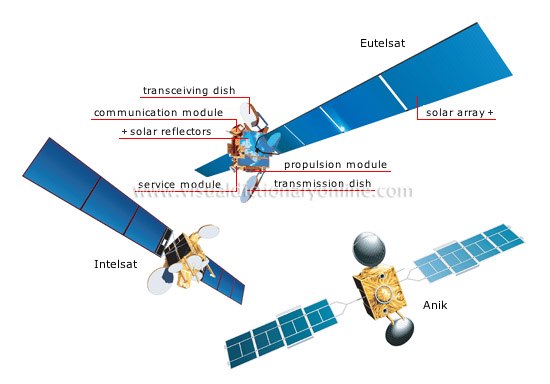telecommunication satellites
Space vehicles placed into geostationary orbit at an altitude of 22,000 mi to receive and broadcast long-distance signals in the form of radio waves.
Eutelsat 
Family of European satellites launched 20 years ago to transmit television, telephone and business communications signals.
transmission dish 
Antenna allowing the satellite to broadcast radio waves to an Earth station.
service module 
Section of the satellite housing the command and control systems.
propulsion module 
Section of the satellite housing the rocket engine, which maintains the position and orientation of the satellite in its orbit.
solar array 
Power supply device that converts solar energy into immediately usable electrical energy.
solar reflectors 
Protective panels used to deflect the Sun’s rays and lower the heat reaching the satellite equipment so it will not be damaged.
communication module 
Part of the satellite that receives and amplifies signals captured by the dish and then relays them to the transmission dish.
transceiving dish 
Antenna allowing a satellite to capture radio waves emitted from Earth and to redirect them to ground stations.
Anik 
Family of Canadian satellites. Anik A1, launched in 1972, was one of the first national telecommunication satellites.
Intelsat 
First network of international telecommunication satellites; it was set up in 1965 to ensure exchanges of telephone and television signals from one end of the globe to the other.










